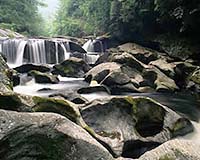
The Montreal water treatment plant dumps 90 times the critical amount of certain estrogen products into the river. It only takes one nanogram (ng) of steroids per liter of water to disrupt the endocrinal system of fish and decrease their fertility.
These are the findings of Liza Viglino, postdoctoral student at the Universite de Montreal’s Department of Chemistry, at the NSERC Industrial Research Chair in Drinking Water Treatment and Distribution, who is under the supervision of Professors Sebastien Sauve and Michèle Prevost.
The presence and effects of estrogen residues on aquatic wildlife are well documented. However, this research is unique because it didn’t only consider natural hormones and those used in oral contraceptives – it also included products used in hormone therapy that is prescribed to menopausal women.
Data indicates that 128 million contraceptive pills and 107 million doses of hormone therapy are consumed every year in Quebec.
Water samples were taken in five different spots: the Mille-Îles river, the St. Lawrence River, the two water collectors entering the Montreal treatment plant and at the exit of the plant.
The only compound detected in the St. Lawrence River was estradiol, a natural hormone. The water still contained 90 ng of estradiol per liter after being treated. “If other products weren’t detected it doesn’t mean they aren’t present,” says Viglino. “Our method doesn’t detect amounts lower than 7 ng per liter.”
According to Professor Sauve, ozone treatments could eliminate these hormonal compounds. He also stresses that 80 to 90 percent of antidepressants remain in the water after treatment. These molecules can have a variety of effects on aquatic wildlife. Again, ozone treatment could destroy these molecules.
by Staff Writers
Montreal, Canada (SPX) Sep 23, 2008
Source: Terra Daily